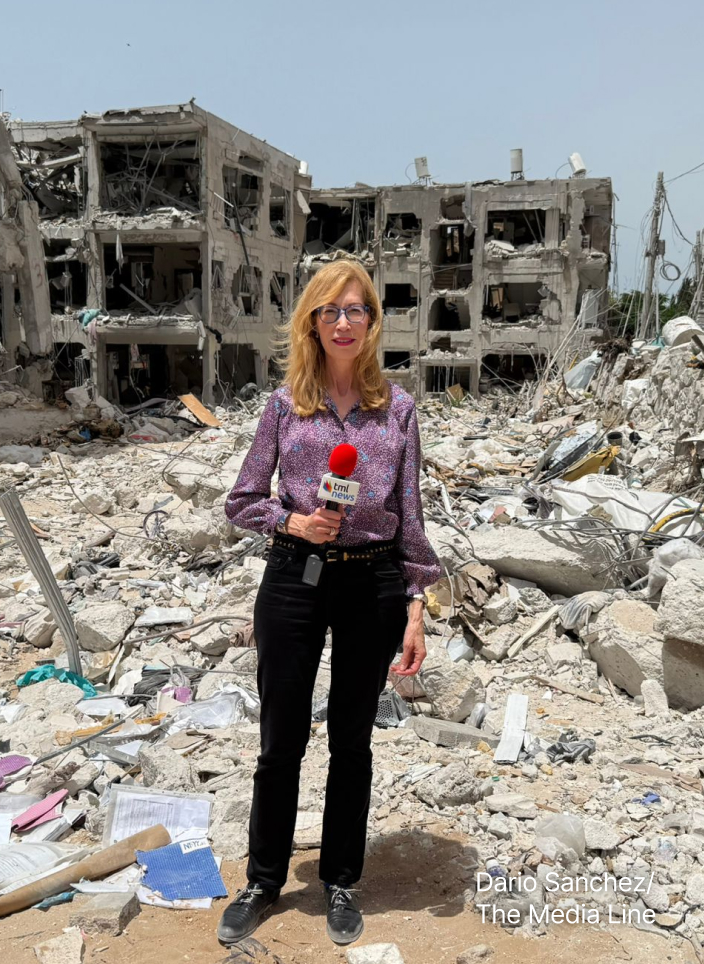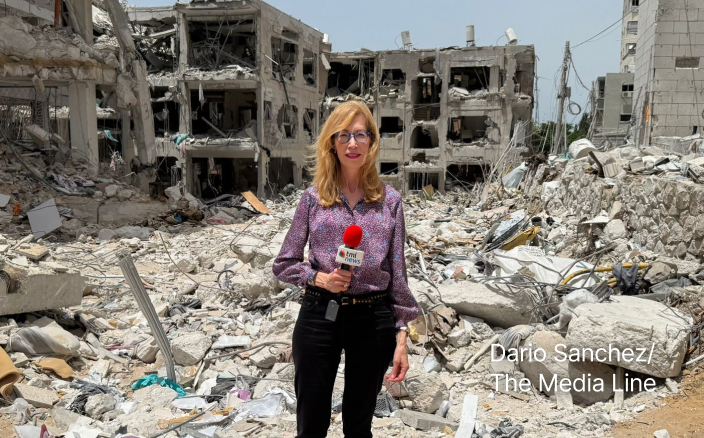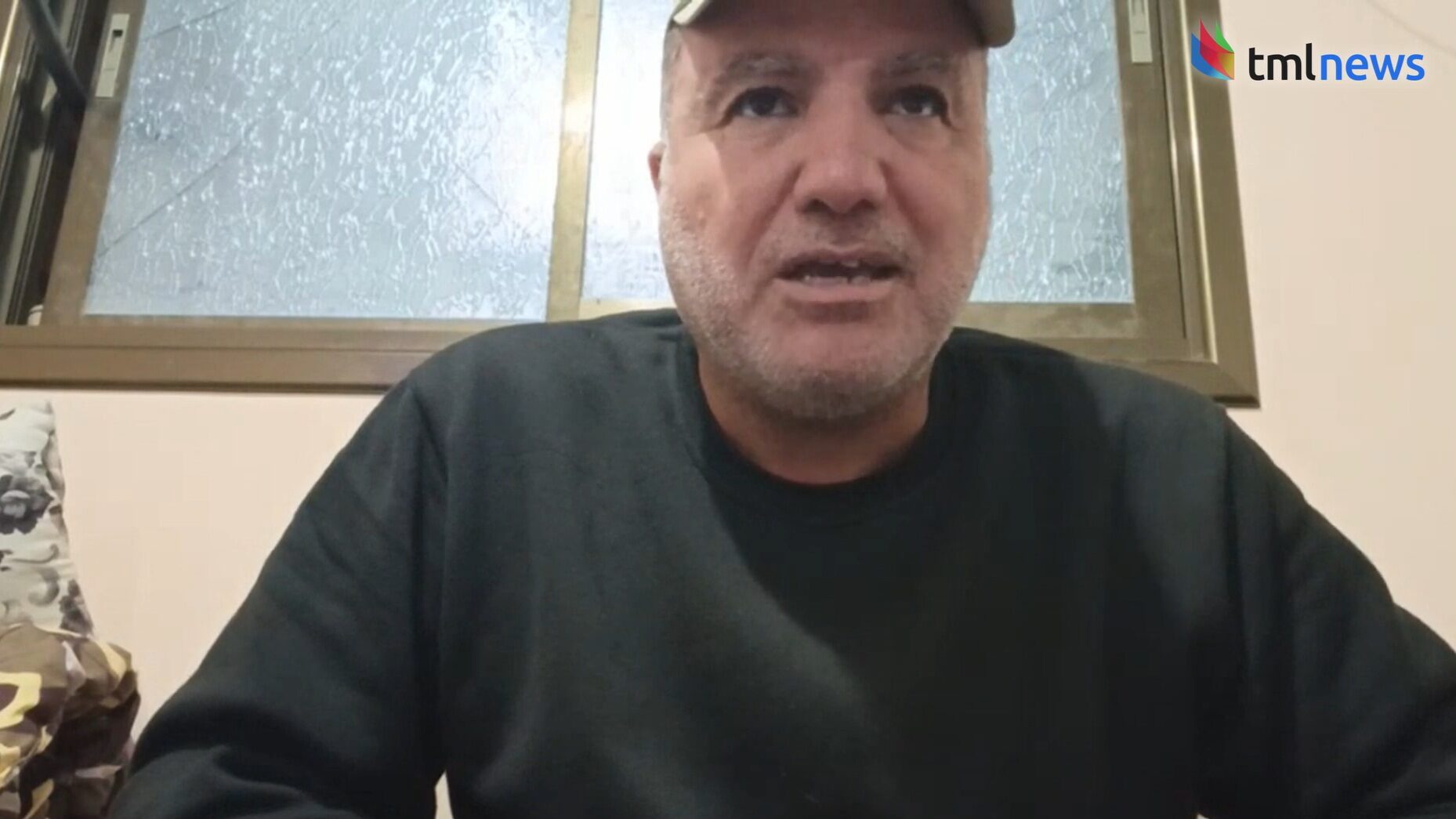Head of Anti-Hamas Gaza Militia to TML: We Are Working for a New Gaza
Counter-Terrorism Strike Force leader Hussam al Astal: Some countries are willing to help us create ‘a Gaza that belongs to its people, not to those who rule by terrorism’
In the southern Gaza city of Khan Yunis, Hussam al-Astal leads a self-organized armed group he calls the Counter-Terrorism Strike Force—one of several militias that emerged across the Gaza Strip after the October 7, 2023 start of the Israel-Hamas war.
The 50-year-old, a former member of the Palestinian Authority’s security service, says his men provide local protection and coordinate humanitarian assistance in what he describes as a “humanitarian zone.” But Hamas views such formations as traitorous groups collaborating with Israel to undermine its authority.
“We are a group based in Khan Yunis, working in the same way as other local armed groups,” al-Astal told The Media Line in an interview Friday. “We decided to organize to address the injustices suffered by our people. After losing faith in everyone else, we chose to act on our own.”
His narrative, like those of other emerging militia leaders, shows new fault lines within Gaza, where months of war, displacement, and political collapse have blurred the boundary between security and rebellion.
After Israeli troops withdrew from parts of Gaza in early October, Hamas moved to reassert control, launching what it called a campaign to “cleanse” the Strip of collaborators and criminal groups.
Around Oct. 12, heavy clashes erupted in Gaza City’s Sabra neighborhood between Hamas security forces and fighters from the Doghmush clan, leaving at least 27 people dead, including eight members of Hamas, according to Palestinian sources. Hamas accused the clan of collaborating with Israel and released footage showing the public execution of alleged collaborators, signaling its intent to reassert control after months of war and internal fragmentation.
The Arrow Unit posted video of one execution on its Telegram channel, accompanied by a statement reading: “This is the fate of every traitor to the homeland and to religion, the moment of the execution of the occupation’s agents from the Doghmush family.”
“Hamas carried out public executions of alleged collaborators in Gaza City. While these actions projected authority, they also underscored Hamas’ determination to demonstrate control after the war,” Dr. Ali Abu Alawar, a lecturer in Middle East studies at Ben-Gurion University, told The Media Line.
Earlier, on Oct. 3, Hamas security units raided parts of Khan Yunis controlled by the al-Mujaida family, accusing them of harboring armed men. Exchanges of fire left several fatalities before local elders brokered a truce, showing the limits of Hamas’ authority in southern Gaza.
Days later, the Hamas-run Interior Ministry announced a “general amnesty” for those not charged with murder but warned that anyone aiding Israel would face execution—a declaration analysts described as both deterrent and threat.
The operations mark some of the most serious internal unrest in Gaza since Hamas seized control of the enclave in 2007. Years of social tension and economic decline, intensified by the war’s disruption of governance, hollowed out centralized authority and created a vacuum now filled by clan and militia forces.
If Hamas continues to kill people in Gaza, which was not the deal, we will have no choice but to go in and kill them
On Oct. 14, US President Donald Trump, speaking aboard Air Force One, downplayed the killings, describing Hamas’ actions against what he called “very bad gangs” as acceptable. He said his administration had authorized the group to act temporarily as Gaza’s police force until a new governing body is formed—remarks that drew mixed reactions among regional analysts and diplomats. Then on Oct. 16, in a Truth Social post, President Trump issued a stark warning to Hamas: “If Hamas continues to kill people in Gaza, which was not the deal, we will have no choice but to go in and kill them.”
“President Trump’s comments effectively acknowledge that Hamas was given an undefined period to maintain internal stability and prevent the Strip from descending into chaos, tribal warfare, or civil conflict,” Alawar added.
Give the gift of hope
We practice what we preach:
accurate, fearless journalism. But we can't do it alone.
- On the ground in Gaza, Syria, Israel, Egypt, Pakistan, and more
- Our program trained more than 100 journalists
- Calling out fake news and reporting real facts
- On the ground in Gaza, Syria, Israel, Egypt, Pakistan, and more
- Our program trained more than 100 journalists
- Calling out fake news and reporting real facts
Join us.
Support The Media Line. Save democracy.


“What we are witnessing today signals the onset of an internal Palestinian confrontation—a slide toward civil war,” Mansour Abo Kareem, a Gaza-based political researcher, told The Media Line. “Hamas’ increasingly violent behavior toward armed groups and local families risks triggering major clashes, especially if hostilities with Israel resume.”
He added that the ceasefire has “exposed the weakness of all factions” and left a vacuum now filled by local actors seeking to secure influence and resources.
Speaking from Khan Yunis, al-Astal described his militia as a response to the lawlessness spreading across Gaza—one of many forces emerging in the vacuum left by the war.
“What’s happening now is an attempt by remnants of Hamas’ militant elements to reassert control and prove their presence on the Palestinian scene,” al-Astal said. “After losing nearly all of their military leaders and equipment during the war, they’re trying to show that they still dominate the Gaza Strip.”
He said his militia has been contacted by “some countries” willing to cooperate and provide support but declined to name them, citing security reasons.
“We have received communications from countries ready to cooperate with us and offer support,” he said. “But I cannot disclose their names.”
Al-Astal denied any collaboration with Israel.
“The claims that we receive support from the Israeli army are completely false,” he said. “We operate through international organizations that coordinate with the Israeli side only for humanitarian access.”
While he claims his men could defend themselves if attacked, al-Astal insists his focus is to avoid more Palestinian bloodshed.
“Hamas is currently trying to reach us in order to eliminate us, but that will not happen,” he said. “We are capable of fighting, but that would drag Gaza into a civil war and cause more casualties.”
Al-Astal said he supports an internationally supervised administration to oversee Gaza’s reconstruction—a core element of President Trump’s 20-point peace framework.
“We are prepared to work with any authority that takes responsibility for the revival of Gaza,” he said. “If Hamas hands over its weapons and asks us to surrender ours, we will comply. We welcome President Trump’s plan to end the war and thank him for his efforts.”
We are working for a new Gaza
He insists his group’s aim is not political power but survival and stability.
“We are working for a new Gaza,” he said. “A Gaza that belongs to its people, not to those who rule by terrorism.”
The US president’s 20-point peace framework envisions Gaza under a foreign-supervised transitional authority. Hamas may temporarily act as a policing body on the condition that it disarms—an ambiguity the group has used to justify sweeping security actions.
But while the American president’s plan calls on Hamas to relinquish its weapons, the group has shown no sign of doing so. On Oct. 17, senior Hamas official Mohammad Nazzal said the movement would “maintain security control in Gaza during the transitional period” and could not commit to disarmament at this stage. His remarks make clear the widening gap between Washington’s proposed political roadmap and realities on the ground.
At the same time, Hamas officials have signaled that the movement is open to a long-term ceasefire of up to five years, during which it seeks to oversee Gaza’s rehabilitation and retain a political role in the territory. Nazzal and other senior figures have said Hamas is willing to enter a reconstruction phase but will not disarm or relinquish authority to any transitional administration without guarantees for Palestinian political rights. Analysts view this position as a pragmatic shift aimed at securing Hamas’ survival and influence under the banner of postwar recovery.
Fatah issued a sharp response, warning Hamas against any unilateral attempt to rule Gaza. Fatah spokesperson Abdel Fattah Dawla said the movement “rejects any arrangement that isolates Gaza from the Palestinian national project,” accusing Hamas of putting its political survival ahead of the interests of its people.
“Any future governance in Gaza will likely take the shape of a technocratic administration composed of professionals and experts without formal political affiliation,” Alawar said. “The optimal model for postwar Gaza could be an Arab-led stabilization force involving Egypt, Jordan, and the UAE—possibly joined by Muslim states like Pakistan or Indonesia.”
Amid the power struggle, ordinary Gazans describe an atmosphere of fear and exhaustion.
“The situation in Gaza has become unsettling,” Mahmoud Abu Amra, a teacher from Deir al-Balah, told The Media Line. “We haven’t seen anything that helps us recover. Instead, Hamas forces have reemerged, heavily armed, seeking revenge against armed groups and also against activists who criticized them online.”
Despite the ceasefire declared at Sharm el-Sheikh, Abo Kareem believes the conflict is far from over.
This is not a genuine end to the war; it’s a temporary pause
“This is not a genuine end to the war; it’s a temporary pause,” he said. “Any breach of President Trump’s peace plan, particularly regarding disarmament, governance, or reconstruction, could bring fighting back to Gaza. Hamas’ insistence on keeping its weapons and political monopoly makes a renewed war a strong possibility.”

